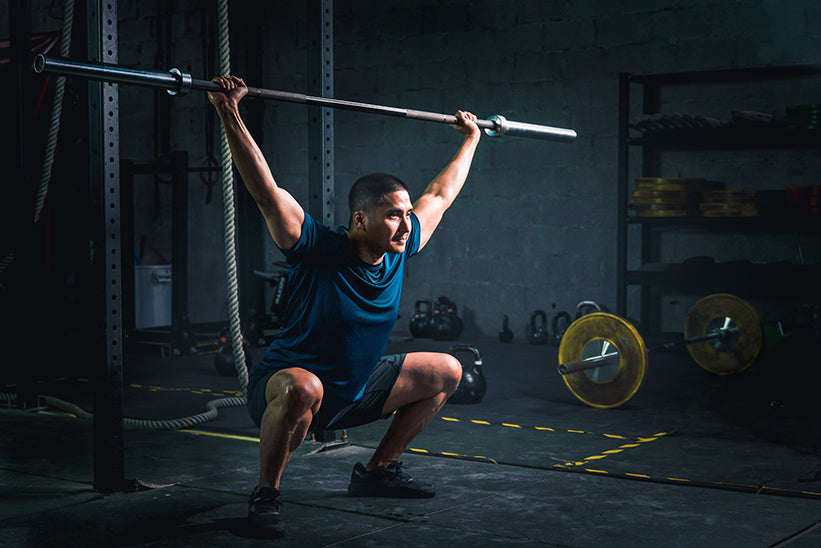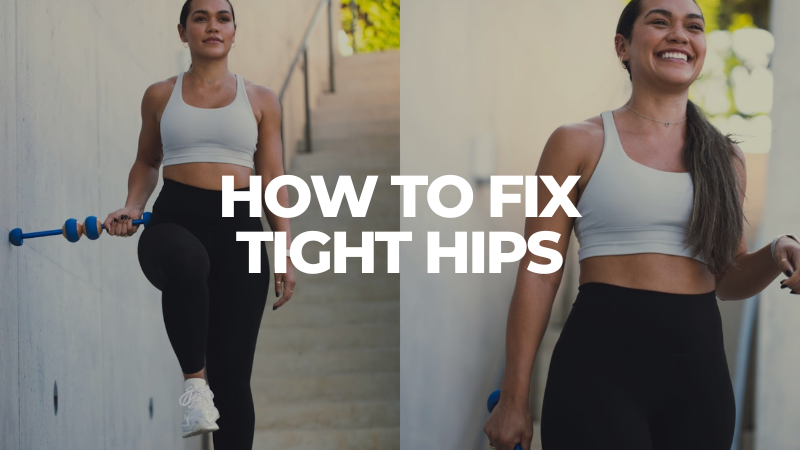As we move through our daily activities, our ability to carry, push, pull, reach overhead, and even walk is influenced by the natural movements of our upper body. All these movements are dependent on the shoulder’s position and its relationship to posture.
Consider how you depend on your shoulder position and freedom of movement to reach for something high in your cabinet, pick up your child, or put on your shirt. Shoulder mobility is needed to do all these movements – and many others – well and without pain.
From an athlete’s perspective,your shoulder mobility is fundamental to throwing, striking, and swinging skills needed for sports. So, whether you are fitness training for your sport or fitness training is your sport of choice, performing exercises with good form, under load, for repeated bouts is necessary to get results.[3] And those desired results rely heavily on your ability to access shoulder mobility.
What Improves Shoulder Mobility?
When discussing shoulder mobility, many think of only the shoulder joint itself. However, healthy shoulder mobility also involves thoracic spine mobility and the position and control of the shoulder blade.[1] All three of these work together to facilitate shoulder movement. When muscle or fascial tension create poor posture or habits, this can affect one or all three aspects of shoulder mobility. Check out the illustrated example below.

An easy way to see how posture and position affect shoulder mobility is to mimic the posture on the right in the picture above. Round your upper back, let your shoulders roll forward, and move your head position forward. Raise your arms as high as possible while in this posture, and pay attention to where your arms stop. Now stand up tall with your ears, shoulders, and hips in a vertical line like the picture on the left. Lift your arms again as high as you possibly can. Better? As demonstrated, the ability to stand upright in a tall position and maintain shoulder alignment is essential for shoulder mobility.
A recent study by Laudner and Thorson in the Journal of Sports Rehabilitation found that self-myofascial release of pectoralis minor (a muscle on your chest) can improve shoulder joint range of motion.[2] When the chest muscle holds tension, it can pull the shoulders forward and reinforces a bad posture that can block the freedom of movement in the shoulder joint. By performing a self-myofascial release on the chest muscle, the subjects improved shoulder mobility immediately.
Let’s do one more demonstration to illustrate how tension in your muscles and fascia can change perception and feeling as well as influence posture. Take a section of your shirt on your chest and twist it, taking up as much loose material and slack as possible. Do you feel how it changes the tension in other areas of your shirt and affects the feeling around your shoulder on the same side? Imagine that if you held this tension over time without intervening, you would likely give in to the tension and relax into a forward posture. Similarly, using self-myofascial release to reduce tension in the chest muscles can improve your shoulder posture, position, and shoulder mobility.
Myofascial Release Techniques for Shoulder Mobility
MOBO offers the Power3-Shoulder video, a set of myofascial releases that are efficiently programmed together to target and reduce tension in muscles that commonly affect shoulder mobility.
The Upper Trap Release reduces tension in the upper back and can improve the positioning of your shoulder blade to contribute to better shoulder mobility.

The Chest Release reduces tension in the front of the shoulder to improve posture and position of the shoulder joint.

The Head and Neck Release reduces tension on the back of the head and neck area, which contributes to upper body tension and affects shoulder position.

Incorporating myofascial release tools and techniques in movement preparation and warm-up routines can improve your shoulder mobility. This will transfer to better lifting, pressing, pulling, throwing, and swinging for your fitness or sports training.[3]
Each step you take to consistently improve and maintain shoulder mobility will pay off in better performance and the ability to protect yourself from injury.
References
- Cook, G. (2013) FMS Screening and Physical Limitations.
- Laudner, K., & Thorson, K. (2020). Acute Effects of Pectoralis Minor Self-Mobilization on Shoulder Motion and Posture: A Blinded and Randomized Placebo-Controlled Study in Asymptomatic Individuals, Journal of Sport Rehabilitation, 29(4), 420-424.
- Ljungqvist A, Schwellnus MP, Bachl N, Collins M, Cook J, Khan KM, Maffulli N, Pitsiladis Y, Riley G, Golspink G, Venter D, Derman EW, Engebretsen L, Volpi P. International Olympic Committee consensus statement: molecular basis of connective tissue and muscle injuries in sport. Clin Sports Med. 2008 Jan;27(1):231-9, x-xi. doi: 10.1016/j.csm.2007.10.007. PMID: 18206577.
- Parisi, B., & Allen, J. (2019). Fascia Training: A Whole System Approach. Parisi Media Productions.



